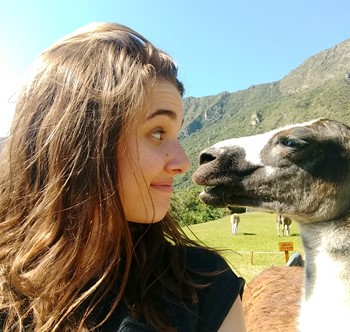
Mia & the Llama (one of our former Fair Trade+ Gallery associates in Peru)
What is it about llamas that's captured our hearts so? Is it those gentle, lushly lashed eyes? Their exotic roots from far-away lands? Or is it their take-no-guff "look at me wrong and I'll spit" attitudes that we admire?
Whatever it is, the popularity of llamas can't be denied. They're everywhere! For a while now, we've had their smaller cousins, the alpaca, made with real Peruvian alpaca fur, in our Fair Trade+ Gallery. Now, they've migrated to several rooms throughout the store.
About Llamas
Llamas are South American relatives of the camel. Though llamas don't have a hump, the family resemblance is pretty strong.
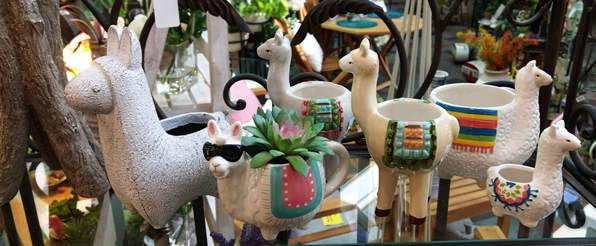
Planters in our Conservatory
For centuries, the peoples of the Andes Mountains have used llamas as pack animals. The maximum weight a llama can hold is 28% of its body weight, though that much can only be sustained by the animal for short distances. Generally, it's recommended to only saddle them with 20% or less of their weight. At an average adult weight of 290-440 pounds, that means a carry limit of 58-88 pounds, so riding them is out of the question.

Llama Old Vine Blend from Argentina. In The Little Traveler's Wine Room.
Other South American Camelids

Pillows in our Linen Dept.
People often confuse llamas with alpacas. What's the difference? For one thing, whereas llamas are primarily pack animals, alpacas are raised for their wool. Physically, you can tell the difference between the two by:
- Height. Llamas are much taller—42"-46" at the shoulder versus 34"-36" for alpacas.
- Ears. Llamas have longer, banana-shaped ears while alpacas have shorter, straighter, triangular ears.
- Faces. Llamas have longer faces; alpaca faces are blunter—like a smooshed in llama face.
Male llamas and female alpacas can crossbreed. Their offspring is called a huarizo, which is much smaller than a llama with longer fur and is sterile.
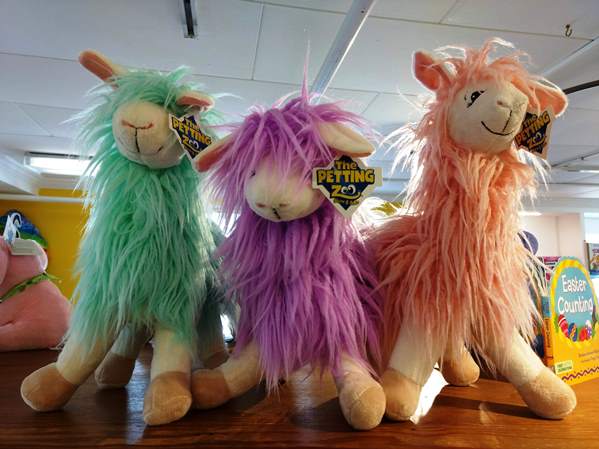
How can you tell these cuties in our Toy Room are llamas?
Both llamas and alpacas are domestically raised, but there are also two types of wild camelids in South America: guanacos and vicuñas. Guanacos are mostly found in Argentina, but can also be spotted in the high plains and mountains of Peru, Chile, and Bolivia. The largest population of vicuñas is in Peru. Both species of wild camelids are more slender than their domesticated cousins, and both are prized for their fine wool, which is considered to be on par with cashmere.
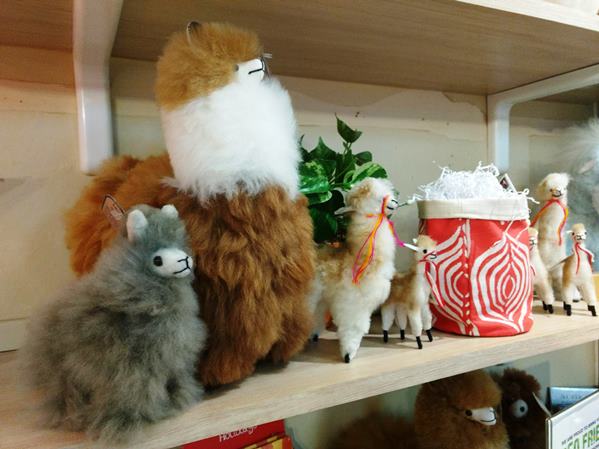
Llamas, Alpacas & Vicuñas in our Fair Trade+ Gallery
Llamas are thought to be the domesticated form of the guanaco, while alpacas are domesticated descendants of the vicuña. Rescued from extinction by conservation efforts in recent decades, the vicuña is the national animal of Peru and appears on the country's coat of arms.
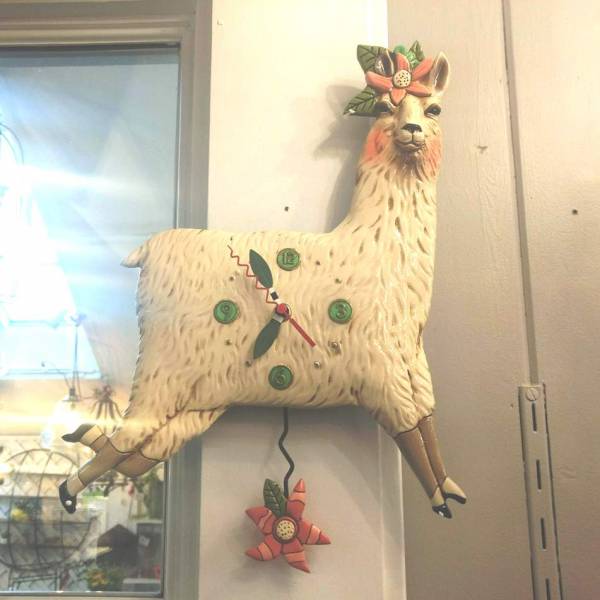
Llama Clock in our Gift Galleries
What Do They Have in Common?
- Llamas, alpacas, guanacos & vicuñas are all herbivores.
- They all have 2-toed feet with soft pads for better grip.
- They all have 3-chambered stomachs (unlike cows, pigs, etc. which have 4-chambered stomachs).
One more thing they all have in common—they're downright adorable.

Llama Mugs in Housewares











